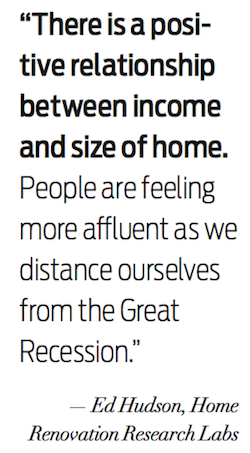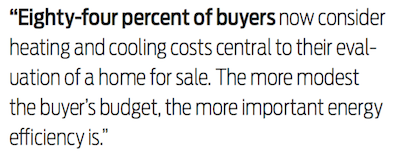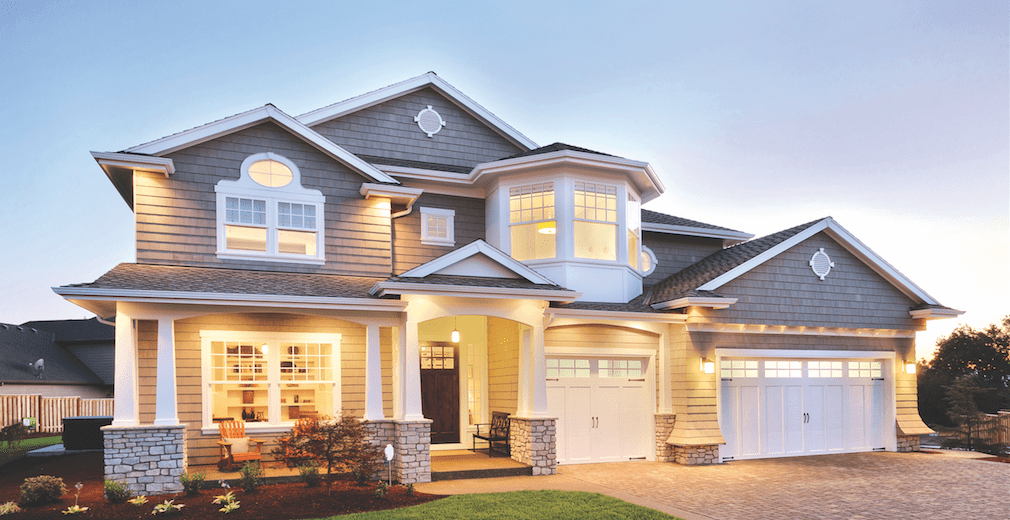If conventional wisdom about Millennials and Baby Boomers is to be believed, our nation’s homebuying aspirations are getting smaller, square footage-wise that is. Purportedly, these two generations sandwiching Gen Xers and outnumbering them by more than 2-to-1, according to the latest data from the Pew Research Center, want smaller homes in communities where they can walk to entertainment, shopping, and, in the case of Millennials, work.
Housing industry pundits have also claimed the Great Recession soured Americans’ belief that homeownership can generate wealth. Appreciation is no longer a given, and fancy remodels probably aren’t going to pay you back when you sell your home like they did 15 years ago.
Is it all true?
Well, not exactly. In 2015, Americans spent $340 billion remodeling their homes, according to the National Association of Realtors 2017 Remodeling Impact Report. That doesn’t exactly sound like a cohort that’s worried home upgrades are a waste of money.
DOES SIZE MATTER?
It’s true today’s buyers are thinking smaller. And that’s in large part because the largest generation of homebuyers right now are Millennials. “They’re facing affordability issues,” said Jessica Lautz, NAR’s managing director of survey, research and communications. She added, “They tend to buy older homes at about 1,800 sq. ft.”
But it’s less about idealism than necessity. “They’re typically buying in suburban areas and pushed out of city centers by affordability factors and school concerns,” Lautz noted.
 Millennial buyers shouldn’t be ignored. According to NAR’s 2017 Home Buyers and Sellers Generational Trends Report, they make up some 35% of today’s homebuyers and more than 65% of first-time buyers. They are the largest generational cohort of homebuyers today, and they’re only going to get larger as more of them build careers, marry and start families. Half of Millennial buyers have children under 18.
Millennial buyers shouldn’t be ignored. According to NAR’s 2017 Home Buyers and Sellers Generational Trends Report, they make up some 35% of today’s homebuyers and more than 65% of first-time buyers. They are the largest generational cohort of homebuyers today, and they’re only going to get larger as more of them build careers, marry and start families. Half of Millennial buyers have children under 18.
And while Millennials might like to think they’re different from their parents in their purchasing decisions, and they may reject the McMansions that gained popularity among Baby Boomers and Gen Xers, the numbers tell a different story.
“Millennials are not as different from their parents as they may want to be,” said Lautz. “They’re purchasing pretty traditional homes with three bedrooms in a suburban location.”
And while Millennials may want a smaller footprint, they’re not necessarily buying one. In 1987, the first year NAR collected data on home size, the typical home purchased (including multifamily as well as single-family) was 1,720 sq. ft. That figure rose to 1,900 sq. ft. by 2011 and has remained flat since. So in reality, today’s buyers are buying bigger, and Gen Xers are buying the biggest, with the average size of their purchased homes coming in at 2,100 sq. ft.
Home Innovation Research Labs’ Ed Hudson, director of market research, said that if one looks at the U.S. Census, single-family home buyers are still buying relatively large residences. “We’ve been hearing for 20 years now that homebuyers want smaller,” he remarked, “but that hasn’t played out except for a couple of time periods.”
Hudson said in the years directly following the Great Recession, average American house size went from 2,700 sq. ft. to 2,500 sq. ft., but now the numbers are up again. “There’s a positive relationship between income and size of home.” he explained. “The highest income earners buy the biggest homes.” Right now that means Gen Xers because Millennials haven’t reached the high arc of their career paths yet. Currently, Hudson said, average American home size is 2,650 sq. ft.
Hudson believes the home size buyers choose is “more affluence-based than ideologically based.” The one exception to that rule, he said, is the Baby Boomer desire to downsize.
Lautz pointed out, however, that the lack of any downsizing in home size purchases may not necessarily be the result of preference. “Inventory is really constrained at lower price points,” she said, “So smaller homes are not available for purchase.” According to NAR data, 86% of buyers are purchasing previously owned homes, not new construction.
The result is that if buyers still buy, the market will necessitate they buy bigger.
One area where one can expect to see larger homes lagging in popularity is in the high-end space. Dan Fries, SRA, president of Daniel Fries & Associates in Cumming, Georgia, said, “the 15,000-sq. ft. homes are not popular anymore.” That’s not to say high-end buyers don’t want big, but “after about eight to 10,000 sq. ft., you almost get penalized for that square footage,” he noted.
Fries also said that residences in the $1 million+ market have decreased in size by about 500 sq. ft. on average when it comes to new construction.
REMODEL POTENTIAL
Meanwhile the idea that remodels don’t add value anymore is also a misnomer. “We are seeing that kitchens and bathrooms are popular when you think about resale of properties,” said Lautz. And kitchen upgrades are still the No. 1 way to give a home more market appeal.
In fact, of Realtors surveyed by NAR, 54% had suggested a seller complete a kitchen upgrade before listing a home. Based on the 2017 survey, the average cost of a kitchen upgrade was $35,000 with $20,000 of that cost recovered at the point of sale, which translates into a cost recovery of 57%.
Meanwhile complete kitchen renovations saw an average cost of $65,000, with sellers recovering $40,000, or 62%, of the renovation expense when selling the home. Bathroom renovations saw an average cost recovery of 50%.
“Kitchens are a big seller,” Hudson agreed. “Cabinets and countertops are showpieces that are getting a lot of attention as well,” he added. “The average number of cabinets per house continues to grow.” And buyers increasingly want high-end countertops. Granite occupies 45% of the market share with quartz at 15%.
Hudson believes the luxury details are part of a new post-downturn mindset: “People are feeling more affluent as we distance ourselves from the Great Recession.” And their home-buying preferences are reflecting that.
In fact, Lautz noted that even sellers with older kitchens who are feeling cash-strapped should consider putting in new countertops, refacing cabinets or upgrading lighting and faucet fixtures before putting a home on the market.
But even though kitchens are the most popular way to upgrade a home, the upgrade with the highest return on investment is actually the roof. “That’s a big dollar value to a first-time home buyer,” Lautz pointed out. A new homeowner isn’t going to have the funds to replace a leaky or inefficient roofing system, so they’ll go for a home with new shingles over one with a spanking new kitchen.
Sellers spent an average of $7,500 on new roofs, according to NAR’s 2017 survey, and experienced a cost recovery of 109%, making new roofs the single best home upgrade for not only increasing marketability but enjoying a profit from the upgrade at time of sale.
Hudson said there is evidence the average buyer has shifted to wanting space over features. “My theory, based on HIRL’s builder practices survey and the Census is the mix of single-family housing has changed somewhat in 2016,” he remarked. “In 2015, 25% of new homes were considered luxury homes by builders; that number fell to 18% in 2016.”
Fries, who works in the Atlanta market, agreed, noting that tract builders constructing homes in the $300-$400,000 price range are “putting out bigger homes for less money.” Fries added, “They’re building boxes with less fenestration.” That means fewer corners, angles, complicated roof lines, and architectural features. Instead, they’re including huge master bedrooms with big closets and bathrooms.
“The second-time buyer is still looking for 2,500 to 3,000 sq. ft. for new construction in the suburb,” said Fries. That story is a little different in revitalized areas where an older, two-bedroom home is the norm.
“Millennials think two bedrooms are fine,” he said. “Porches and terraces are higher on their list than a big bonus room.” Off-street parking is also a big factor, so garages are important. Millennials are more likely, Fries contended, to spend money on energy efficiency over square footage. “They like walkability to shopping and things to do. The more walkable the neighborhood, the higher density, and it means smaller square footages.”
Fries framed it succinctly: “Young Millennials want style; second-time buyers want space.”
Fries said if he were to rank the changes/upgrades most likely to add value to a home, he’d vote for a kitchen renovation first, followed by the master bathroom, with energy efficiency improvements ranking third. He believes energy efficiency has finally arrived in terms of being a mainstream consideration when it comes to home buying.
Eighty-four percent of buyers now consider heating and cooling costs central to their evaluation of a home for sale. The more modest the buyer’s budget, the more important energy efficiency is.
What should not be overlooked, however, is that survey data from HIRL indicates buyers will sacrifice proximity to work and shopping as well as more expensive materials for greater home affordability.
Size matters, yes, but price is still the biggest factor.
What’s in and what’s out
Data provided by the National Association of Realtors 2017 Remodeling Impact Report and surveys from Home Innovation Research Labs reveal which upgrades are critical in today's market and what features buyers are willing to pay for.
Upgraded kitchens with solid surface, light-colored countertops, painted solid wood cabinets, on-trend faucets (think brushed nickel) and lighting, and center islands with stools instead of an attached breakfast room rule. High-end, commercial-grade appliances are on the way out.
Paint is an inexpensive way to modernize a home. Today’s popular colors are grays, whites and pastels. Get rid of wallpaper and paint the trim.
Formal living rooms are out, too. Buyers want kitchens that open onto a family room.
Hardwood and engineered wood floors in main living areas, including kitchens, are a mainstream preference now. Hardwood outranks all other flooring types in market share. Buyers want carpets in bedrooms only.
Energy-efficient windows and doors are now standard and expected features, too, though custom doors and windows are out. Two-thirds of all new homes (including luxury homes) now feature vinyl windows, though wood windows still dominate northern climates.
High-density foam insulation, which not only dramatically increases energy efficiency but also reduces traffic noise, has become the expected standard in new construction.
New, high-efficiency HVAC systems add value by reducing utility costs.
Integrated indoor and outdoor spaces with walls of windows, rolling doors, screened porches or patios, and outdoor kitchens are high on Millennial preference lists.
Spacious, renovated master bathrooms are always in. Addition of a new bathroom in a home with only one or two helps.
Home security systems and smart homes are becoming the norm, not the exception.
New roofs are worth the investment and will almost always lead to recouping costs.
Atlanta appraiser Dan Fries said how much a homeowner sees in return on investment in renovations or upgrades “depends on how much you spend.” But he cautioned against overdoing it, particularly if one doesn’t plan on staying in the home long-term. “A good rule of thumb to follow for a kitchen renovation is don’t invest more than 10% of the market value of the home,” he explained. “More than that is red flag.”
And focus on upgrades people really want, like solid surface countertops. Also, consider the features of other homes in the neighborhood. A seller doing a complete kitchen renovation isn’t going to see a good return on investment if he lives in a neighborhood of older homes where 1970s kitchens are the standard and no one else is upgrading.





